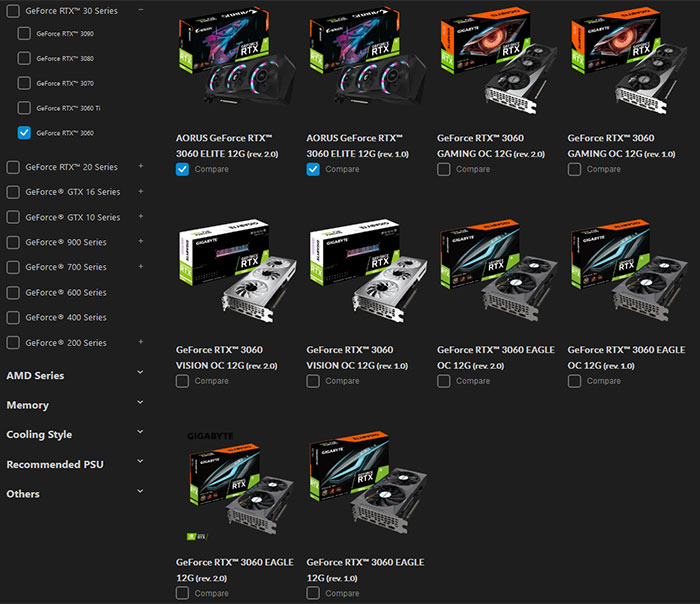Just over a week ago HEXUS reported on Galax being one of the first Nvidia partners to officially update its GeForce RTX30 product stack with revised GPUs that featured Nvidia's reworked crypto-perf-nerf technology. It seems that the GPUs on which these new products are based are going to be widely referred to as LHR (Lite Hash Rate) GPUs.
Yesterday Twitter hardware watcher momomo-us spotted that Gigabyte / Aorus had updated its GeForce RTX 3060 product pages with five Rev 2.0 graphics cards, all of them featuring LHR GPUs. There is some hope that with the full GeForce RTX 30 series being updated to LHR more will stay on shelves to be bought by gamers, but we will see the fuller results of this strategy in the coming weeks / months.

Nvidia's previous attempts at limiting ETH mining hash rates with the freshly launched GeForce RTX 3060 12GB back in February famously fell apart after a dev driver allowed users to bypass the limiter. Things went bad to worse when the use of multiple RTX 3060s in 'mining rigs' was found to be simple to achieve, by simply plugging dummy HDMI dongles into the cards that weren't connected to a display.

We have no detailed information about how this new LHR implementation works. One must hope that Nvidia has learnt lessons from its failure, if high-tech companies repeat silly mistakes it is particularly disappointing.
You can find all the new GeForce RTX 3060 Rev 2.0 products listed here. Filter to show only RTX 3060 and you will see 10 products, with the LHR and older version cards on one page, all together. Comparing the Aorus GeForce RTX 3060 Elite 12G Rev 2.0 and Rev 1.0, for example, reveals no spec differences at all. You will find the reference to the LHR GPU only on each product's feature page, as you can see highlighted in the screenshot above.
Now it only looks like a question of when, not if, all the GeForce RTX 30 series from all AIBs will be LHR GPU packing products as standard.













